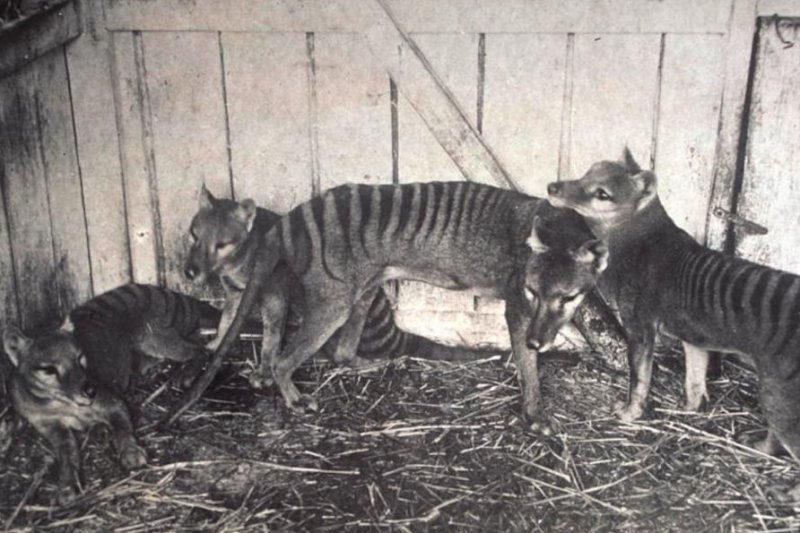The Tasmanian tiger was hunted to extinction in the early 1930s. The last tiger -- technically a marsupial -- died in captivity in 1936. Photo by the Tasmanian Museum and Art Gallery
Dec. 12 (UPI) -- Scientists have sequenced the Tasmanian tiger's genome, offering new insights into the species' demise.
The tiger's newly sequenced genome is one of the most complete genetic maps compiled by scientists. The genetic blueprint suggest the species was suffering from a lack of genetic diversity by the time it was hunted to extinction in the 1930s.
Though most frequently called the Tasmanian tiger, the species Thylacinus cynocephalus is also sometimes referred to as the Tasmanian wolf. Its likeness is more dog-like than feline, but the species is in fact a marsupial -- the largest known carnivore with a pouch.
An international team of scientists led by researchers at the University of Melbourne sequenced the species' genome using DNA collected from a well-preserved, 106-year-old pouch-young Tasmanian tiger specimen held at the Museums Victoria's Collections.
"The genome has allowed us to confirm the thylacine's place in the evolutionary tree," lead researcher Andrew Pask said in a news release. "The Tasmanian tiger belongs in a sister lineage to the Dasyuridae, the family which includes the Tasmanian devil and the dunnart."
The newly compiled genomic data suggests the tiger faced many of the environmental and genetic challenges currently facing the Tasmanian devil.
Both species' problem of poor genetic diversity may have begun even before the animals became isolated on Tasmania between 10,000 and 13,000 years ago. And much like the devil today, the Tasmanian tiger likely struggled with disease.
But scientists hope their ongoing analysis of the tiger's genome can help conservationists improve management and protection plans for the Tasmanian devil.
There is also some discussion of trying to bring the Tasmanian tiger back to life.
"Our hope is that there is a lot the thylacine can tell us about the genetic basis of extinction to help other species," Pask said. "As this genome is one of the most complete for an extinct species, it is technically the first step to 'bringing the thylacine back,' but we are still a long way off that possibility."
Scientists would have to find a way to transport the tiger's genome into a marsupial model -- "like work conducted to include mammoth genes in the modern elephant," Pask said.
Not everyone believes the tiger needs to brought back to life. There are have been a number of unconfirmed sightings in recent years.
The latest research -- detailed in the journal Nature -- offered other details besides the species' impoverished genetic diversity. Analysis showed the genes responsible for the species appearance -- the shape of its eye, jaw and nose -- are most similar to those found among the genomes of the gray wolf and red fox, which explains their similar snouts.
"The fact these groups have not shared a common ancestor since the Jurassic makes this an astounding example of convergence between distantly related species," Pask said. "This reveals a whole new understanding of the process of evolution, we can now explore these regions of the genome to help understand how two species converge on the same appearance, and how the process of evolution works."















